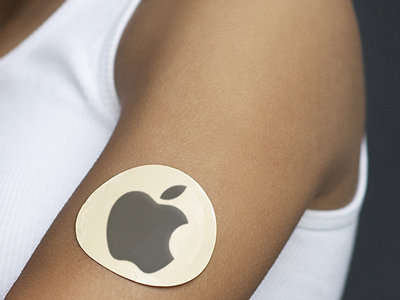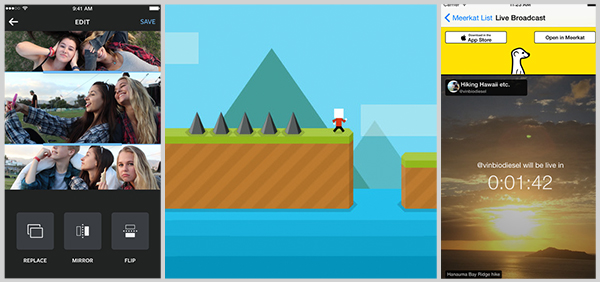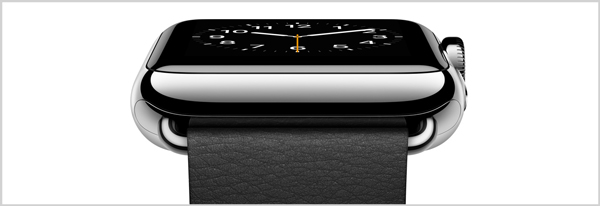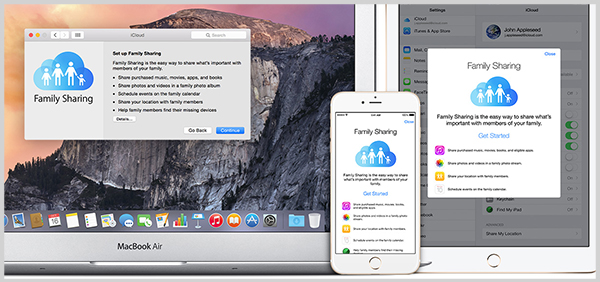Why I Can't Quit the iPhone for the Galaxy S6 (Op-Ed)
The Samsung Galaxy S6 is better in almost every way than the iPhone, but I still can't bring myself to make the switch.


I'm feeling like a hypocrite right now. I just finished a face-off between the Galaxy S6 and the iPhone 6, and Samsung's flagship phone wiped the floor with Apple's. The S6 has a better display, sharper camera and even a sexier design. And yet, if you gave me the option right now to swap my iPhone for the S6, I'd decline. I know I'm not alone. My reasons for staying put illustrate the real challenge Samsung faces. You might call it i-inertia.
Here's why I can't quit the iPhone.
The App Advantage

During my review of the Galaxy S6 Edge, I came across all sorts of awesome apps that are also on the iPhone, including the addictive Storm Blade game. There's also plenty of apps that Android offers that iOS doesn't, such as the Nova Launcher app that lets you customize and change the look and feel of the interface to suit your liking. (You can't do that on the iPhone.)
However, time and time again developers choose iOS as their launch platform for the hottest new apps. The most recent examples are Twitter live-streaming apps Meerkat and Periscope, but there are lots of others. The sadistically difficult Mr. Jump game racked up 5 million downloads in four days, and you can't get it on Android. Instagram's Hyperlapse and Layout apps? iPhone first. Samsung has its own app store, but it's nothing special compared to Google Play.
iCloud and Seamless iPhone-Mac Integration

As someone who uses a MacBook Air, I love that I can take notes on my iPhone using the Notes app and then pull them up on my Mac later. And I also love that my iPhone photos are always waiting for me in iPhoto, although I hate the interface (the new Photos app looks better). I could use Evernote or something else on the S6, but Notes is simple and it works.
MORE: iPhone 6 vs Galaxy S6: Why Samsung Beats Apple
With OS X Yosemite, I can now send and receive texts right from my Mac (when my iPhone is nearby), as well as make or accept calls - great for when I want a louder speaker phone. Samsung offers something similar for Windows laptops, called SideSync, which goes even further by letting you share your phone screen on the desktop and remotely control your device. But SideSync is something you need to install; Apple's stuff is all baked in.
Get instant access to breaking news, the hottest reviews, great deals and helpful tips.
The Apple Watch Effect

I've tried every Samsung wearable thus far, and with the exception of the Gear VR, none of them excite me. Based on sales figures, most consumers seem to feel the same way. There's been a parade of Samsung smartwatches running different operating systems, from the Tizen-powered Gear 2 to the Android-powered Gear Live and the Gear Fit running a proprietary OS. There's also the Gear S, which doubles as a phone, but Samsung hasn't yet figured out how to make a wrist wearable that's truly compelling.
The Apple Watch promises to be better, combining fitness-tracking features with novel ways to communicate and an army of high-quality apps - not to mention a gazillion style combinations. You'll be able to use watch with Apple Pay, open your car, get into your hotel room and more. The Apple Watch will only work with the iPhone, and I can't give the most buzzed-about wearable a shot if I'm carrying a Galaxy S6.
I Have an Apple Family

Sometimes when I'm on my way home I get a text from my 10-year-old daughter's iPod, or she'll send me a note while I'm on a business trip saying she misses me. We haven't yet given her a smartphone, so the only easy way to communicate - without downloading a separate app - is Apple's Messages app.
MORE: 10 Smartphones with the Longest Battery Life
Meanwhile, my wife is on an iPhone 6 and my son uses an iPad to get his Minecraft fix. With Apple's Family Sharing feature, all four of us can share apps, books, music and movie purchases, which saves money. I haven't taken advantage of the family calendar or family photo album features, but it's nice to know they're there.
Bottom Line
Based on its own merits, I'd rather use the Galaxy S6, but the reason I won't make the switch comes down to Apple's ecosystem. It has its own gravitational pull because of the way its gadgets and services work together. Samsung has a universe of its own devices, including TVs and appliances, but it hasn't been able to tell that better-together story, which is especially difficult when it's so reliant on Google's software.
That's all starting to change, at least in some ways, as Samsung builds up its smart- home arsenal (via its SmartThings acquisition) and rolls out its Samsung Pay solution this summer to compete with Apple Pay. The company has also flirted with leaving Android behind in favor of Tizen for phones, but there's just too much momentum behind the former.
Could I make the switch some day? It's possible, but it's going to take more than a superior phone.
- Smartphone Interactive Buying Guide
- Best Family Plans
- Mobile Wallets: Apple Pay vs. Google Wallet vs. Samsung Pay
Mark Spoonauer is the Editor in Chief of Tom's Guide. Follow him at @mspoonauer. Follow Tom's Guide at @tomsguide, on Facebook and on Google+.
Mark Spoonauer is the global editor in chief of Tom's Guide and has covered technology for over 20 years. In addition to overseeing the direction of Tom's Guide, Mark specializes in covering all things mobile, having reviewed dozens of smartphones and other gadgets. He has spoken at key industry events and appears regularly on TV to discuss the latest trends, including Cheddar, Fox Business and other outlets. Mark was previously editor in chief of Laptop Mag, and his work has appeared in Wired, Popular Science and Inc. Follow him on Twitter at @mspoonauer.
-
Larry Litmanen I am leaving iPhone 6 for HTC M9.Reply
The only thing i will miss about iphone is the Camera. I don't think i ever took a bad shot with it. I had Galaxy S5 and iPhone Camera image quality (not the spects) was light years ahead.
Other than that really nothing holds me to iPhone. -
gggplaya I have the Galaxy S6 and an Ipad Air, the s6 camera is great, i'm a hobbyist photographer with $3-$4k in camera equipment, and while a phone will never compete with my DSLR's in quite a few areas, the image quality is very good given enough light. The OIS is phenominal, but IP6 has that too. My canon 6D and even my sony a6000 will dance circles around either phone in indoor shooting with just natural house lamps. But given enough light, these phone cameras are still great. THe S6 takes better pictures than my ipad, due to the OIS. Outdoors, both are about equal where you'll have to pixel peep to tell the difference.Reply
As for APPs, the only app i wish android had was Nick Jr. Every toddler loves it, which is why i had to buy the IPAD.
Other than that, i have a life which includes very little of social media other than when i'm wait at an airport or something. So no other apple exclusive apps interest me.
-
Mark Spoonauer ReplyI am leaving iPhone 6 for HTC M9.
The only thing i will miss about iphone is the Camera. I don't think i ever took a bad shot with it. I had Galaxy S5 and iPhone Camera image quality (not the spects) was light years ahead.
Your call of course but not sure I would pick the One M9. The S6 camera is a lot better based on our testing. In fact, the One M9 delivered worse performance and battery life than the S6. Unless you really like HTC Sense? http://www.tomsguide.com/us/htc-one-m9,review-2713.html
Other than that really nothing holds me to iPhone. -
gggplaya I should add, i wish the GS6 had raw camera images. Iphone won't, but google updated lollipop to allow for full manipulation of the camera API. If it had raw, people could do wonders with the RAW images.Reply -
burkhartmj TL: DR he doesn't want to switch because he has other Apple things.Reply
I try to avoid being too negative about article like this, but I can't help but question why it was felt this article was necessary. Ecosystem lock-in is the biggest and most well-known reason people don't switch platforms. After people dealing with this for nearly 10 years with smartphones since the first iPhone and first Android, it's not really news. -
hausjam I here ya. I am not fond of iPhone anymore but everyone around me has one and it keeps pulling me back.Reply -
zodiacfml Agreed. I'm stuck with Google's universe. If only there's a Nexus for that S6 hardware......Reply
TL: DR he doesn't want to switch because he has other Apple things.
I try to avoid being too negative about article like this, but I can't help but question why it was felt this article was necessary. Ecosystem lock-in is the biggest and most well-known reason people don't switch platforms. After people dealing with this for nearly 10 years with smartphones since the first iPhone and first Android, it's not really news. -
DarkSable So... you don't want to switch because you can't be bothered to install one program on your computer or download a damn app?Reply
That seems like a... well, like a very typical american consumer, I suppose. -
itsnotmeitsyou ReplyTL: DR he doesn't want to switch because he has other Apple things.
I try to avoid being too negative about article like this, but I can't help but question why it was felt this article was necessary. Ecosystem lock-in is the biggest and most well-known reason people don't switch platforms. After people dealing with this for nearly 10 years with smartphones since the first iPhone and first Android, it's not really news.
This is one of many reasons to diversify your investments, e.g. where you invest your tech.
I used to be tied to Apple between Macbook Pro/iPhone/AppleTV/iTunes for all my devices, but once they switched to the lightning connector and started pushing OS updates that rendered my otherwise perfectly functional hardware useless, I decided it was time to divest myself of dependence on a single provider for tech.
Spotify replaced my carefully curated library of music, and its as good or better. As easy or easier. Its multi-platform and everywhere. Online or offline.
Cloud storage? Dropbox for the essentials, and BTSync for the big stuff.
Gmail is hard to beat, and I can import/export my contacts from there, but I dont need google for more than that, and I could tolerably go elsewhere with carddav support.
Outlook/GCal remain calendar giants, but I dont depend on that as much so I can cut ties when necessary.
I opted for a Nexus 5 for my last Mobile purchase, and have the option of Ubuntu Mobile, FirefoxOS, and need to investigate a CM build as well.
There are plenty of benefits from floating atop the dependence, and its not that hard to do so.
In the end, being a dynamic consumer makes providers work towards more compelling products, instead of just drafting off of zealots for a few years at a time. -
mrjhh So, using Google Keep for keeping notes, instead of Apple Notes was too much of a stretch? All one needs to use Keep in multiple places is to log into Google on your browser. And the photos get uploaded to G+, so don't understand that complaint either. Sounds like someone who didn't have time to learn how things work in the Google universe.Reply

